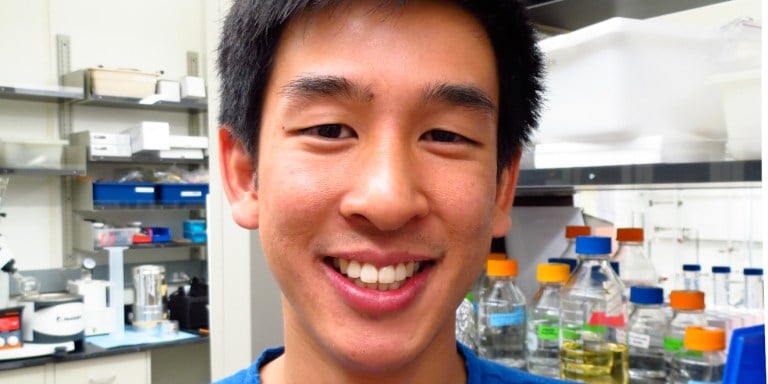Stanford researchers have engineered the easy-to-grow tobacco plant to produce small amounts of a starting chemical, or “precursor,” on which a particular cancer drug is based – one normally derived from an endangered plant.
Their work, published on Sept. 10 in Science Magazine, suggests a potentially more efficient and sustainable way to obtain the drug, and their methodology — pinpointing the mechanism by which the endangered plant produces the precursor — may prove useful in the study of other plant-derived drugs.
Assistant professor of chemical engineering Elizabeth Sattely and her fifth-year graduate student Warren Lau M.S. ’12 began studying the widely-used, plant-based cancer drug called etoposide two years ago. Etoposide is used in chemotherapy to target and kill suspiciously active cells.
Etoposide relies upon a chemical defense compound produced by a rare Himalayan plant, the mayapple. If Sattely and Lau could understand the mayapple’s defense mechanism, they reasoned, they might be able to replicate the same defense chemical in a more accessible organism.
Sattely and Lau first needed to determine which of the mayapple’s genes were responsible for producing the compound. However, the plant’s large number of genes made testing each individual gene inefficient. The researchers instead determined a more focused strategy: wounding the plant with a needle to activate its defenses and then observing what new chemicals appeared. This narrowed the number of gene candidates to a manageable 31.
After identifying the relevant genes, Sattely and Lau transferred them to a tobacco plant using a technique called transient expression system. According to Lau, tobacco was a “model organism” for use in the study since it is simple to grow and has been widely studied.
The researchers found that tobacco successfully synthesized small amounts of the precursor, and the relevant proteins remained present in the plants for at least five days.
Lau said that he and Sattely are still exploring ways to increase the amount of drug precursor produced, as well as ways to produce the precursor in different organisms. Currently, the most promising candidate is yeast. Not only are scientists familiar with cultivating it, yeast also allows researchers to modify drug precursors in ways that plants do not support.
Sattely explained that subtle genetic tweaks could improve the final product.
“We’d love to be able to make different versions of this molecule and change the pathway in a small way to get compounds that might have better activity, or fewer side effects,” Sattely said. “We’re looking at the flexibility of the pathway: can we produce something that’s similar but a little bit different?”
Sattely added that the science has become sufficiently mature to enable rigorous investigations into how plants make molecules of interest. Both researchers hope to use their techniques to study the drug-producing mechanisms of other medicinally valuable plants.
“There [are] quite a few drugs on the essential list of medicine from the World Health Organization that are derived from plants, and the strange thing is that people have known about these drugs for a long time,” Lau said. “But because they’re so structurally complex, it’s really hard for people to make [them] synthetically.”
Contact Hannah Knowles at hknowles ‘at’ stanford.edu.
